Ready to join the adventure? Smart scope sales are on!
TOOLS. Astronomy-curious or interested in picking it back up? There’s never been a better time, thanks to Black Friday sales happening right now.
Update: now that the sales are over, I’ve returned the scopes that were discounted to their original prices so this post can continue to be useful.
If you don’t already have a smart telescope but are interested in giving one a try, now is the best time of year to dive in. Not only are the long dark nights of fall and winter great for observing (layer up!), but this is also the season for savings thanks to discounts major suppliers usually roll out around Black Friday.
In this post I cover several leading smart telescopes – there are more than ever this year – with quick takes, a review link, and link to product page for each (courtesy of my favorite supplier High Point Scientific; not sponsored by them in any way, they’re just awesome). Even if you already have a telescope, maybe you’ll discover a tempting upgrade or sidekick!
This is the perfect chance to find a great holiday present for a loved one, a friend – or why not for yourself? Considering these handy little devices are doorways to a universe of adventure and potentially a lifetime of learning about STEM, history, and so many other fascinating subjects, it’s hard to imagine a better choice.
Just plain smart
But before we get to the hardware, let’s take a moment to recap why this new generation of computer-enabled telescopes is so special:
time: while your eye looking through a traditional visual telescope only collects light for an instant before transmitting the image to your brain, smart telescopes gather photons for minutes or even hours, combining the results into one view over time.
all-in-one: the new devices are not just telescopes but meld several other previously separate elements into a portable and easy-to-setup package, including a motorized mount (for holding and pointing the telescope), computer with guidance software (does the navigation for you), autofocuser, and in some cases even a built-in filter that blocks out artificial light, for city use.
image quality: the pictures are stunning.
cost: while higher-end models can get pricier, basic smart telescopes do a great job and are priced similarly to entry-level traditional telescopes – around US$500.
Smart telescopes are one of the main reasons I started What I’m Looking At. Because they enable the kinds of astronomical adventures I love to post about, without requiring deep technical knowledge or (at least in some cases) a fat wallet. They’re quite simply blowing the doors of amateur astronomy wide open, making it easier than ever for anyone to explore the Cosmos.
So, without further ado, let’s look at some of the latest options currently out there.
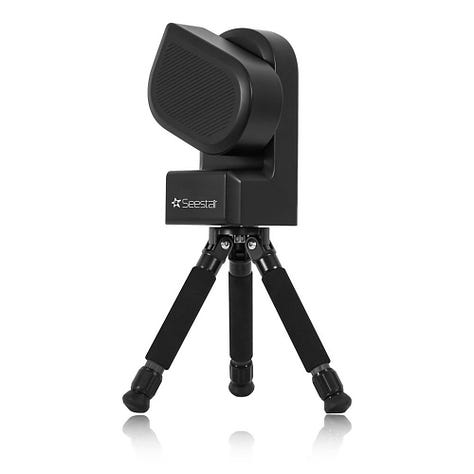
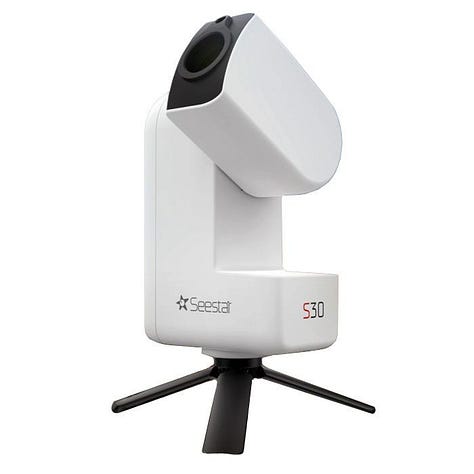
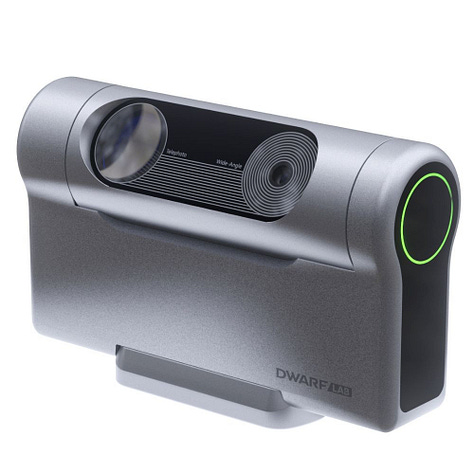
“Solid choices”
ZWO Seestar S50: $499 (Review) (Product page)
This is the one I own and IMHO represents the best value-for-money of any device on the list (including those in the “Extra” category”).
Very complete package with built-in light pollution filter, external solar filter, high-quality tripod and protective carrying case.
New mosaic mode enables capturing larger swaths of the sky beyond a single sensor frame (ZWO releases firmware updates, sometimes with major improvements such as this, on a rolling basis).
ZWO Seestar S30: $349 (Review) (Product page)
Offers the same experience as S50 but in a smaller package, with somewhat reduced optical specs (though interestingly, a better sensor than S50).
Unlike S50, also features a second, smaller, widefield camera.
Launched just in time for the Holidays 2024, to great reviews and with an amazing price already, so it looks like ZWO won’t be putting it on sale this Black Friday.
DwarfLab DWARF 3: $499.99 (Review) (Product page)
Smallest and lightest on the list, if portability is your jam DWARF 3 just might be for you.
One of the few smart telescopes currently to offer an equatorial mode. In other words, DWARF 3 can track targets with one axis rotating parallel to the Earth’s axis. Long story short, it can make better use of its field of view (section of sky it sees) by avoiding the artifacts that can form toward the edges of non-equatorial-mounted telescopes’ frames as they build up images over time.
Great for daytime uses like nature photography.
... and bonus! It looks like that cute robot Johnny 5 from the 80s movie Short Circuit.

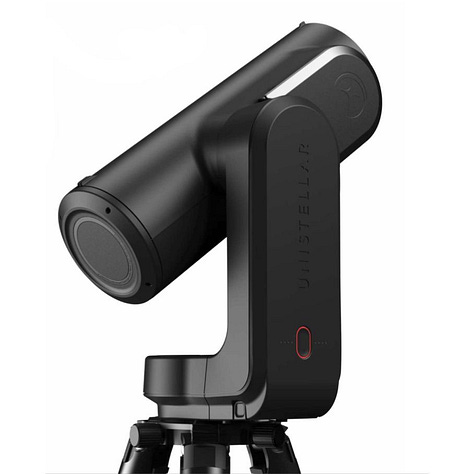

“Getting fancier”
Vaonis Vespera II: $1690 (Review) (Product page)
From the makers of the original smart telescope (Stellina).
For the substantial step up in price, the popular Vespera II offers the same size aperture (diameter of the lens; same aperture means same amount of light in), but otherwise distinctly better specs than Seestar S50: for example it’s a quad refractor (4 lenses) instead of a triplet (3), and has a 3840×2160px (8.3 MP) sensor vs. Seestar’s 1920x1080px (2.1 MP). Do those improvements fully justify the additional price? Many seem to think so!
Not to be outdone when it comes to movie references, the Vespera II looks like living proof WALL-E and EVE did eventually settle down and start a family.
Unistellar ODYSSEY: $2299 (Review) (Product page)
Moving up the ladder we find Unistellar, one of the earlier companies kicking off the smart telescope wave with their first EVSCOPE back in 2020. Think of Unistellar as like the high-end SUVs of the smart telescope market.
ODYSSEY packages Unistellar’s premium technology in a more portable shape and at a more affordable price point than its larger and heavier siblings EQUINOX 2 and EVSCOPE 2, but still with an 85mm aperture (vs. Vespera II’s and S50’s 50mm aperture; meaning more light in).
Unistellar EQUINOX 2: $2499 (Review) (Product page)
Weighing in at 19.8 lbs (9 kg) including its tripod and with a 114mm (4.49") aperture, EQUINOX 2 is no longer a “little” device – but size does have potential advantages in terms of optical specs. EQUINOX 2 offers both the most light-gathering capability and the most “zoomed in” views of the sky of any telescope so far on the list.
One exciting feature for EQUINOX 2 owners is the active global user community Unistellar cultivates around their telescopes, including a very inspiring Citizen Science Program (we like!) together with the SETI Institute.
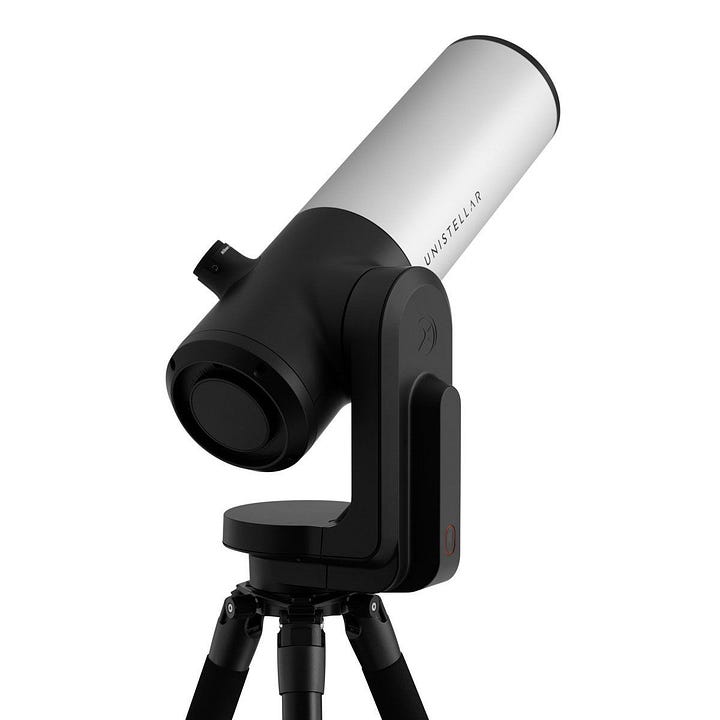
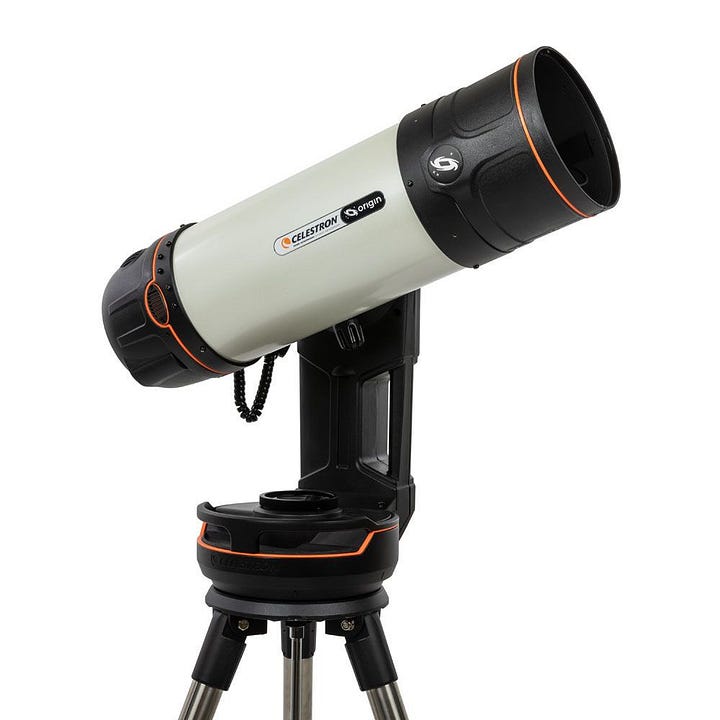
“I’ll have extra everything”
Unistellar EVSCOPE 2: $4899 (Review) (Product page)
Unistellar’s current top-of-the-line and flagship, with their best overall specs (as its price tag suggests!) including the same field of view as EQUINOX 2 but with an even better 7.7 MP sensor, plus a fun digital eyepiece developed in collaboration with Nikon, all wrapped in an elegant package.
EVSCOPE 2 has been used to observe exoplanet transits and even to successfully monitor effects of the recent NASA Dart mission’s impact with asteroid Dimorphos (in short: asteroid go BOOM! On that subject, also check out this fun Google easter egg).
Celestron Origin: $3999 (Review) (Product page)
Best optical specs on the list, based on one of Celestron’s successful 6” (152 mm) traditional telescope designs.
Includes a proven, solid legacy mount.
Though it’s a well-integrated package, also offers some potential for down-the-road upgrades, for example to its camera.
And yet another way to go
Finally, smart telescopes definitely aren’t the only choice when it comes to exploring the night sky digitally, though they’re certainly the simplest and in many cases most cost-effective. But before smart telescopes entered the market, many people connected digital cameras to their traditional telescopes, for either astrophotography or just general fun. And many still do.
Alongside my Seestar S50, I also operate the above rig, which combines a Celestron C8 (8” aperture) telescope with a ZWO 533MC camera on a Sky-Watcher EQ6-R Pro equatorial mount. Though many light-years from the most advanced setup – the sky is literally the limit! – it’s still a powerful combination allowing me to gather exciting views. But, that power comes at the expense of a learning curve for each of the components involved, and the occasional frustration when one of them decides not to play along. Many pieces of traditional equipment are also/soon will be on sale. If you’re interested in exploring this route, either straight away or as a next step after owning and enjoying a smart telescope, by all means go for it! It’s a huge amount of fun and very satisfying. And to the best of my abilities I’m happy to field any questions you might have. Just hit me up at the email below!
About High Point Scientific
As I mentioned I’m not sponsored by or connected with them in any way, but chose to link to their product pages above because I’ve had such good experiences with High Point before. Among other things, they have super-informed non-commissioned sales reps (aka “gear experts) who are happy to chat, both before purchase and after, to make sure you have a smooth buying experience. And they’re nice folks, to boot!
Questions?
Taking the plunge on a new telescope is a big decision, filled with many choices and a tsunami of specs and other details. To the extent I can be of help, or if you just have questions, thoughts or suggestions about this post, please feel free to email me at patrick@whatimlookingat.com.


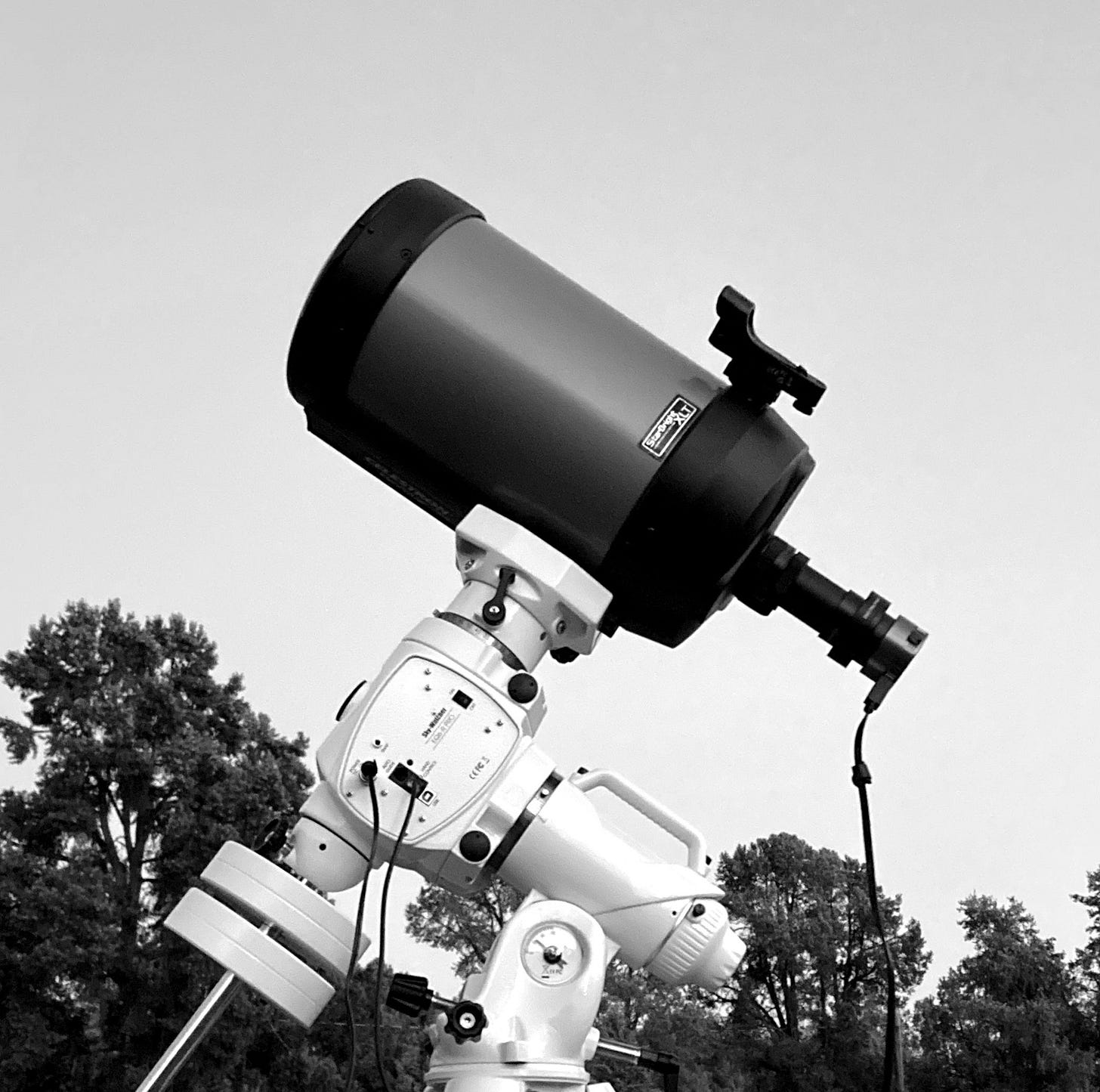
Your traditional rig is impressive. My fav of the bunch looks like a hand-held page scanner.